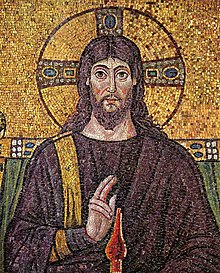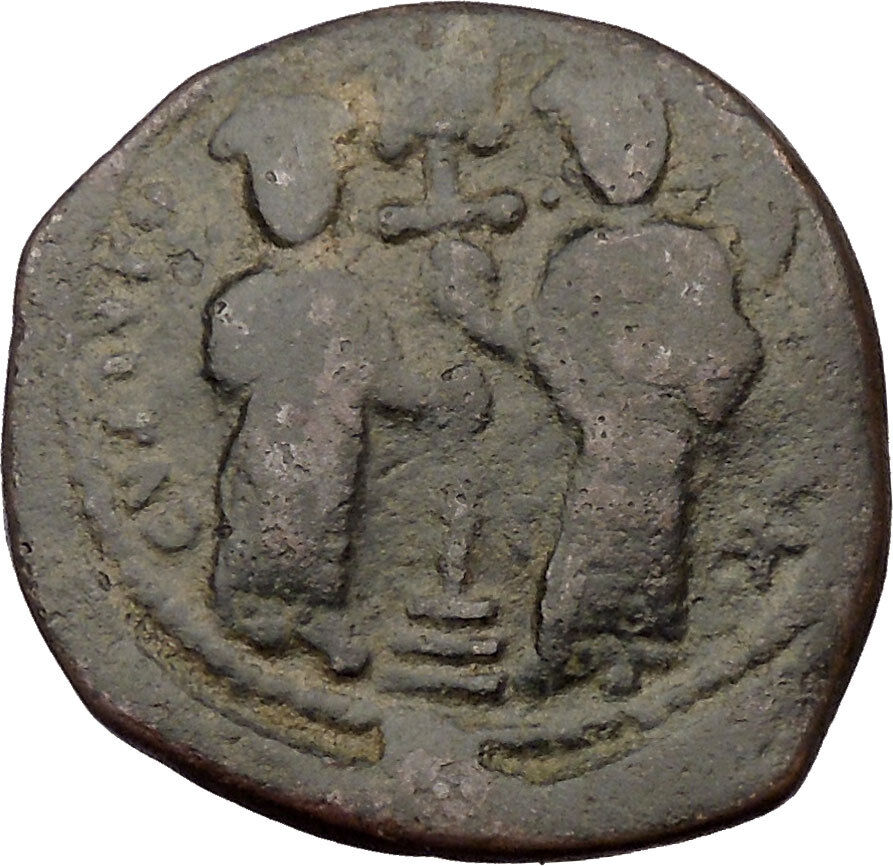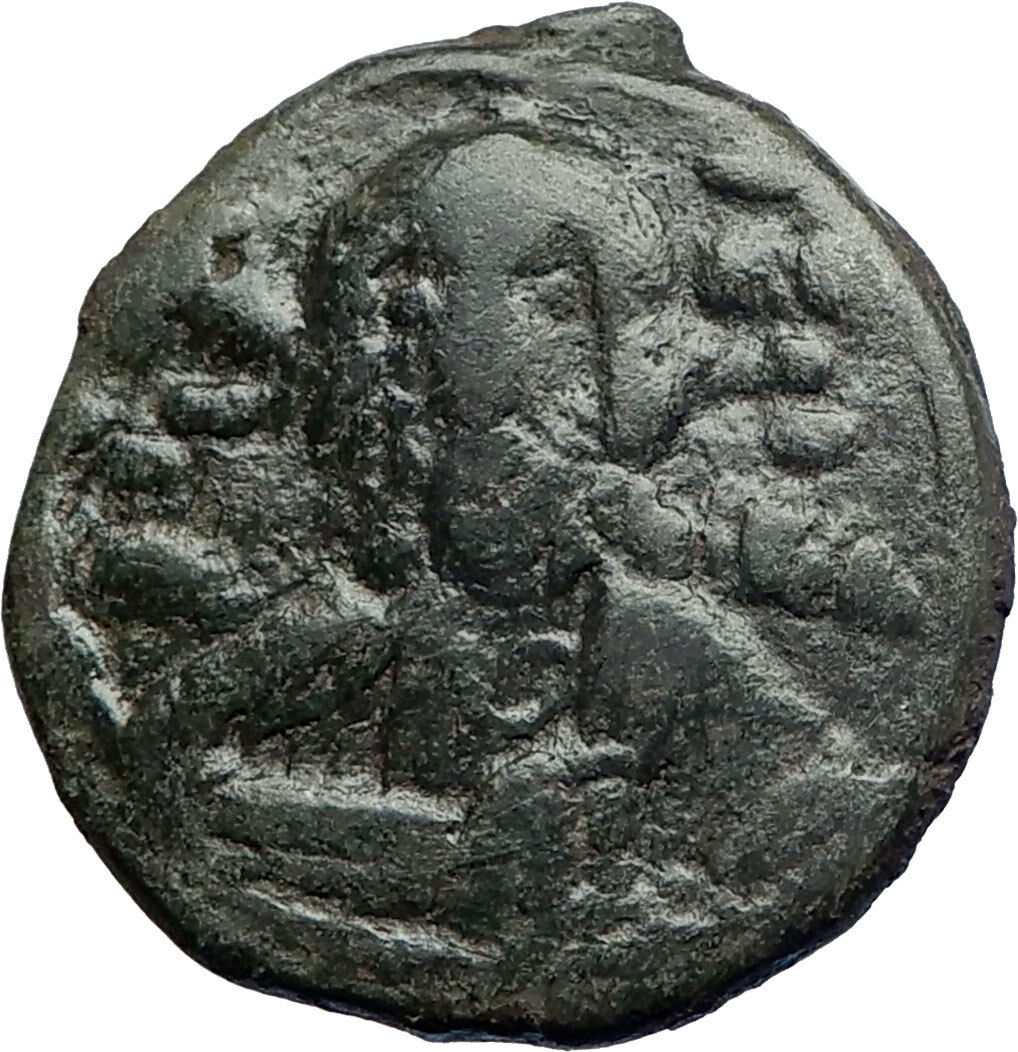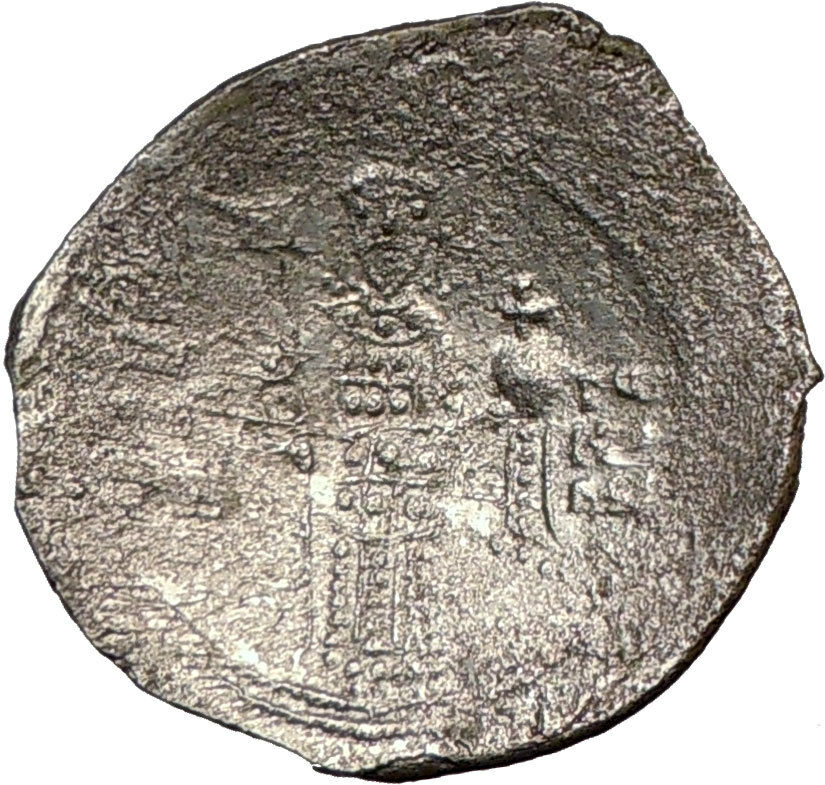|
Byzantine Empire
Anonymous Class
B
Bronze Follis 28mm (11.67
grams)
Struck during the reign of Romanus III 1028-1034 A.D.
Reference: Sear 1823
Bust of Christ facing , wearing a nimbus crown, pallium and colobium, and
holding book
of Gospels with both hands.
Cross, with pellet at each extremity, standing on three steps; in field, above
transverse limbs
of cross, IS -XS; beneath limbs, bAS – ILЄ, bAS – ILЄ (“Jesus Christ
King of Kings”).
For more than a century, the production of Follis denomination Byzantine coins
had religious Christian motifs which included included
Jesus Christ, and even Virgin Mary. These coins were designed to honor Christ
and recognize the subservient role of the Byzantine emperor, with many of the
reverse inscriptions translating to “Jesus Christ King of Kings” and “May Jesus
Christ Conquer”. The Follis denomination coins
were the largest bronze denomination coins issued by the Byzantine empire, and
their large size, along with the Christian motif make them a popular coin type
for collectors. This series ran from the period of Byzantine
emperors John I (969-976 A.D.) to Alexius I (1081-1118 A.D.). The accepted
classification was originally devised by Miss Margaret Thompson with her study
of these types of coins. World famous numismatic
author, David R. Sear adopted this classification system for his book entitled,
Byzantine Coins and Their Values. The references about this coin site Mr. Sear’s
book by the number that they appear in that work. The class types of coins
included
Class A1,
Class A2,
Class B,
Class C,
Class D,
Class E,
Class F,
Class G,
Class H,
Class I,
Class J,
Class K. Read more and see examples of these coins by reading the
JESUS CHRIST
Anonymous Class A-N Byzantine Follis Coins Reference.
Click here to see all the Jesus Christ Anonymous Follis coins for sale.
Click here to see all coins bearing Jesus Christ or related available for sale.
You are bidding on the exact
item pictured, provided with a Certificate of Authenticity and Lifetime
Guarantee of Authenticity.
Jesus of Nazareth (c. 5 BC/BCE – c. 30 AD/CE), also
referred to as Jesus Christ or simply Jesus, is the central figure
of
Christianity. Most
Christian denominations
venerate him as
God the
Son
incarnated
and believe that he
rose from the dead
after being
crucified
.

The
principal sources of information regarding Jesus are the four
canonical gospels, and most
critical scholars
find them, at least the
Synoptic Gospels, useful for reconstructing Jesus’ life and
teachings. Some scholars believe apocryphal texts such as the
Gospel of Thomas and the
Gospel according to the Hebrews
are also
relevant
.
Most critical historians agree that Jesus was a
Jew
who was regarded as a teacher and
healer
, that he
was baptized
by
John the Baptist, and
was crucified
in
Jerusalem
on the orders of the
Roman Prefect
Judaea,
Pontius Pilate, on the charge of
sedition
against the Roman Empire
. Critical Biblical scholars and
historians have offered competing descriptions of Jesus as a self-described
Messiah,
as the leader of an apocalyptic movement, as an itinerant sage, as a charismatic
healer, and as the founder of an independent religious movement. Most
contemporary scholars of the
Historical Jesus consider him to have been an independent,
charismatic founder of a Jewish restoration movement, anticipating an imminent
apocalypse. Other prominent scholars, however, contend that Jesus’ “Kingdom
of God” meant radical personal and social transformation instead of a
future apocalypse.
Christians traditionally believe that Jesus was
born of a virgin
:529–32
performed
miracles
,:358–59
founded
the Church
,
rose from the dead
, and
ascended
into
heaven,:616–20
from which he
will return
.:1091–109
Most Christian scholars today present Jesus as the awaited Messiah promised in
the
Old Testament and as God, arguing that he fulfilled many Messianic
prophecies of the Old Testament
. The majority of Christians
worship Jesus as the incarnation of God the Son, one of three divine persons of
a reject Trinitarianism
Trinity, wholly or partly,
believing it to be non-scriptural.
Romanos III Argyros or Romanus III Argyrus (Greek: Ρωμανός
Γ΄ Αργυρός, Rōmanos III Argyros), (968 – April 11, 1034) was
Byzantine emperor
(November 15, 1028 – April 11, 1034). His last name is
Greek for “silver“.
//
Life
Romanos Argyros was the son of an unnamed member of the Argyros family and a
great-grandson of Emperor
Romanos I
. His sister Maria had married
Giovanni Orseolo
.
Under Basil II
,
The soldier, he served as judge, and under
Constantine VIII
he became
urban prefect
of
Constantinople
. Romanos attracted the attention of Constantine VIII, who
forced him to divorce his wife (sending her into a
monastery
)
and to marry the emperor’s daughter
Zoe
. The marriage took place on November 12, 1028, and three days later
Constantine VIII died, leaving Romanos III as emperor.
The new emperor showed great eagerness to make his mark as a ruler, but was
mostly unfortunate in his enterprises. He spent large sums upon new buildings
and in endowing the monks
, and in his endeavour to relieve the pressure of taxation disorganized
the finances of the state. Idealizing
Marcus Aurelius
,
Romanos aspired to be a new “philosopher king“,
and similarly desired to imitate the military prowess of
Trajan
.
Among his striking cultural achievements one should note the foundation of
the Monastery of the Peribleptos (Sulu Manastir).
In 1030 he resolved to retaliate upon the incursions of the
Muslims
on the
eastern frontier by leading a large army in person against
Aleppo
, but by
allowing himself to be surprised on the march sustained a serious defeat at Azaz
near Antioch
.
Though this disaster was retrieved by the capture and successful defence of
Edessa
by
George Maniakes
in 1032 and by the defeat of a
Saracen
fleet
in the Adriatic
, Romanus never recovered his popularity.
As a member of the aristocracy, Romanos III abandoned his predecessors’
curtailment of the privileges of the nobility and reduced their taxes, at the
same time allowing peasant freeholders to fall into a condition of serfdom. In a
vain attempt to reduce expenditure, Romanos limited his wife’s expenses, which
merely exacerbated the alienation between the spouses.
At home Romanos III faced several conspiracies, mostly centered around his
sister-in-law
Theodora
, as in 1029 and 1030. Although he survived these attempts on the
throne, his early death in 1034 was supposed to have been due to poison
administered by his wife, though it has also been alleged that he was drowned in
a bath on his wife’s orders.
Family
By his first wife Helena, Romanos III Argyros had a daughter:
He had no children by his second wife Zoe.
|









